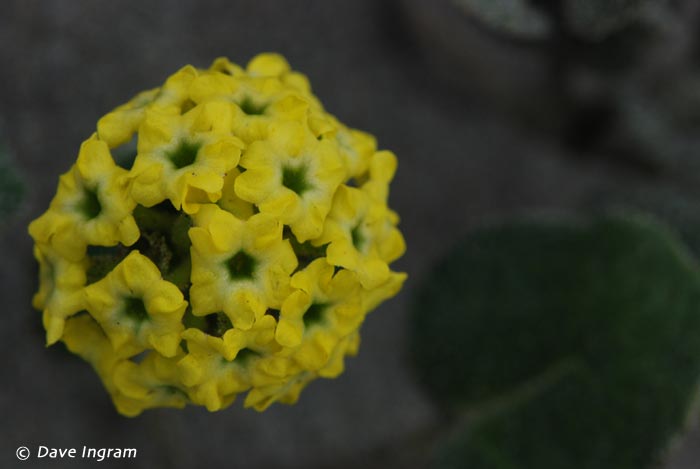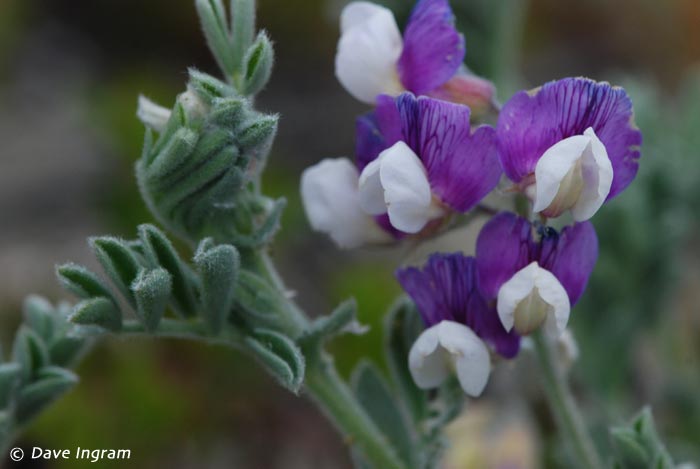This is the time of year to visit the dunes of Pacific Rim National Park Reserve on Vancouver Island, British Columbia. While most visitors walk the endless sandy beaches that the park is famous for, fewer take the time to visit the unique and fragile dune ecosystem. During June and early July, the dunes are filled with the colour of blooming flowers.
Hopping between beach logs at the top of the shore, I followed a trail leading off into a broad expanse of dune. Intrigued, I soon arrived in a strange landscape, where wave-like slopes of sand rose and fell, with troughs between. Initially it seemed like a wasteland, until I happened upon a patch of dazzling yellow sand-verbena flowers.
Between barren tracts of sand I noticed more flowers, and clumps of grass. Tiny mouse tracks, and larger bird tracks crisscrossed the sand. There was life here, but what sort of life could survive on this barren sand dune?
Walking through a dune is like walking back through time. The journey begins at the high tide line, which is often marked by a line of dried seaweed and sea foam. Strong winds blow this material even higher on the beach, and provide nutrients for the first “pioneer” plants to take up residence.
Conditions on the dune are harsh. Winds shift the sand, and may bury plants, creating an unstable environment. Plants must be able to tolerate the abrasive effects of blowing sand and salt spray. Full exposure to the sun can create searing temperatures. Water drains quickly through the sand, and plants must have a means of preserving moisture.
Grasses are some of the plants able to survive these conditions. Dunegrass (Elymus mollis) is a large greyish green native grass with leaf blades about 1 cm wide. European beachgrass (Ammophila arenaria) was introduced to California in the late 1800’s as a sand stabilizer, and was brought to the west coast of Vancouver Island in the 1940’s. European beachgrass is a denser, more narrow-leaved grass that forms large tussocks. Sand blown in from the beach becomes trapped in the grass, causing the sand to stabilize around the plant. Once stabilized, other vegetation may move in.
European beachgrass, and American beachgrass, a similar introduced species, are changing dune ecology and having a negative effect on many native dune plants. Attempts have been made to remove these invaders, but it is not an easy process. They are anchored into the sand by very deep vertical roots, and long horizontal roots called rhizomes sprout new plants. Parks Canada is currently working to remove the non-native grass species in an attempt to return the dunes to their original condition.
Behind the pioneer plants, and the leading edge of grasses, other plants are able to survive on the more protected leeward slopes and troughs of the dunes. These plants have special adaptations to cope with difficult conditions. The yellow sand-verbena (Abronia latifolia) is a perennial that grows from a deep taproot, in low dense mats. The leaves are thick and fleshy, preventing water loss. Sticky hairs cover the entire plant, which adhere to particles of sand. The bright yellow flowers are very fragrant.

Another colourful dune flower is the Beach morning-glory (Convolvulus soldanella). It has magical pink fluted flowers, streaked with white bloom from thick kidney-shaped leaves.
Beach-carrot (Glehnia littoralis), a hardy perennial, has leaves that are wooly beneath causing water droplets to become trapped in the wooly hairs. Beach-carrot has robust corky seeds. In the fall these, and the seeds of many other dune plants, are strewn over the sand by the wind.

Many other plants eke out an existence on the dune, including large-headed sedge (Carex macrocephala), black knotweed (Polygonum paronychia), and grey beach peavine (Lathyrus littoralis).
Going further back, the dunes become more stabilized, and the vegetation older and more established. Stems of kinnikinnick trail out over the sand. Salal, and stunted salt-tolerate Sitka spruce trees grow here. Finally, the forest encroaches, marking the end of the dune and the beginning of the rainforest, a completely different ecosystem.
Having traversed the dune, I had learned much about this unique and fragile environment. Many people walk through the Long Beach dunes every year, and trampling can have a significant impact. If entering the dune, take care not to step on these special plants.
The dramatic dunes of the surf pounded, wind whipped outer shores of our coast are only found at scattered locations in the province; such as the west coast of Vancouver Island, Cape Scott at the northern tip of Vancouver Island, and the eastern beaches of Graham Island on the Queen Charlotte Islands. Many dune plants are listed as rare in BC by the Conservation Data Center.
Different, flatter dune ecosystems also exist along the eastern coast of Vancouver Island. Due to development along the coast, these dunes have become scarce. Some of the above mentioned plants may be found at these sites.
Walking back along the beach, I thought about what a rich place Vancouver Island is. With the ocean, beaches, dunes, rain forests and mountains, there are a wealth of things to discover.
Need to Know:
- Access the dunes from the parking area at Wickaninnish Beach. A park use permit is required to visit Pacific Rim National Park Reserve.
- Parks Canada interpreters lead regular guided walks and beach grass pulls in the dunes. Check at the park information centers for the schedule.
- The dunes are a sensitive ecosystem – please use care when exploring it.
About the Contributor:
Jocie Brooks is a naturalist and writer based in the Comox Valley, Vancouver Island, British Columbia.



